A revised automatic transmission was introduced in 1958; Flight-Pitch Dynaflow, known in later years as the triple turbine transmission. It was standard on the large Buicks and optional on the rest of the line. It was costly to produce due to the complicated mechanism. The Flight Pitch depended entirely on hydraulic multiplication throughout the car’s speed range, making it smooth. It lacked the quick response of Hydra-Matic, and slippage was such that it deemed wasteful of fuel. Buick’s engineering came up with the optional Air Poise suspension which was a development of Cadillac offered by all GM divisions that year.
This system contained individual air bellows that replaced the conventional coil springs at all four corners. Air was achieved to the bellows from a supply tank that ensured sufficient pressure by means of a small, engine-driven compressor. The Air Poise was intended to provide a soft and quiet ride than the coil springs. The owners later discovered the Air Poise leaked sometimes leaving the car sitting on its axles. This ineffectiveness led to Buick losing its third position to Plymouth
The Limited was reintroduced as an upgraded Roadmaster with an extended rear deck decorated by chrome chevrons on all the fenders. It also featured ‘twin-tower taillamps that brought up the rear. The wheelbase remained the same as the Roadmaster but the rear overhang was extended a few inches making the overall length to be 227.1 in. The Buick was much costly than its base models but Buick people insist it was worth the price because it had the highest quality fit and finish. The interiors had a choice of Majove cloth and broadcloth, with leather trim in each choice. The convertibles had fine leather in a wide variety of colors. Buicks fans claim the Limited was a balanced model than the Cadillac with finned aluminum brakes.
